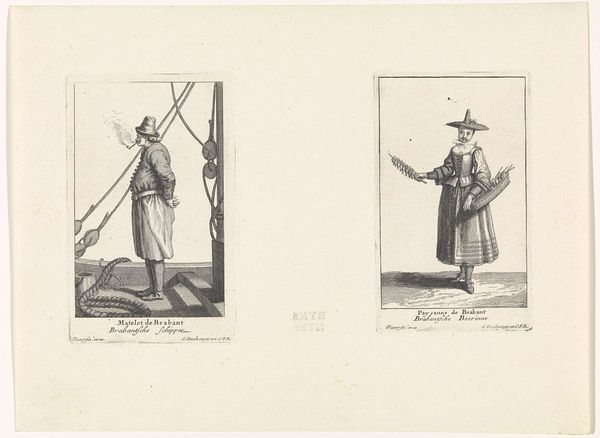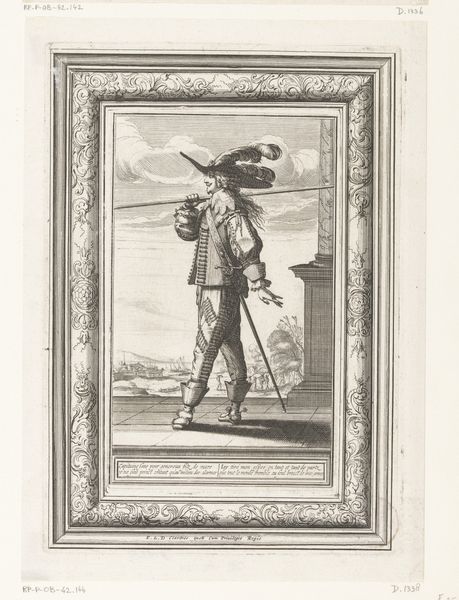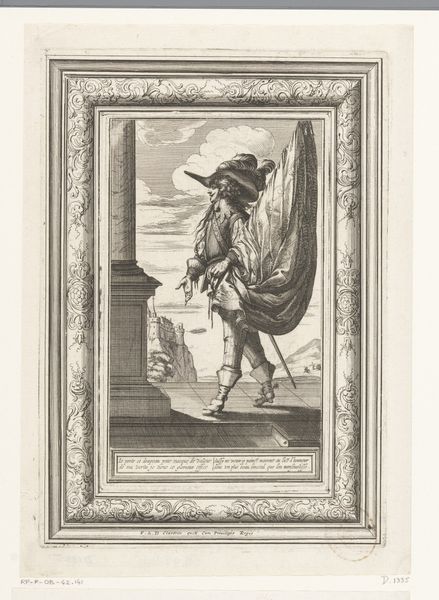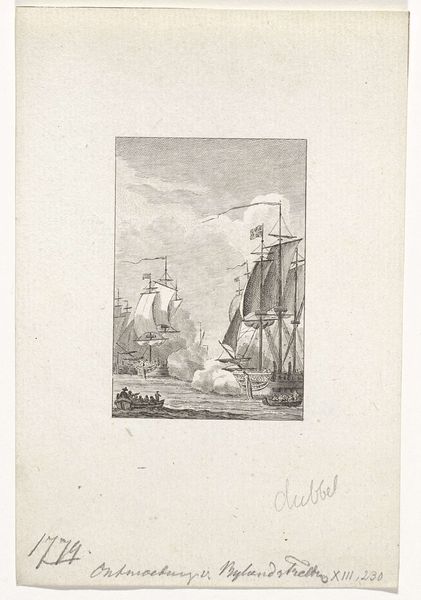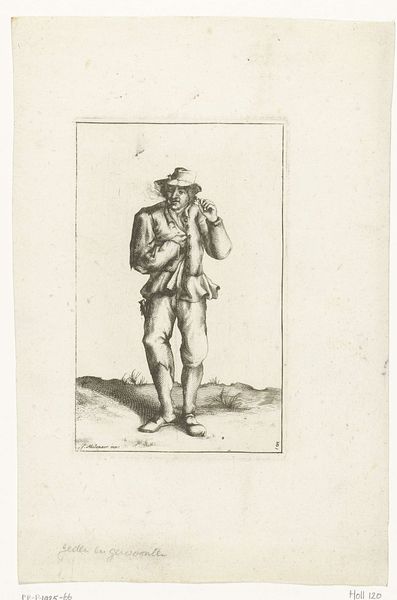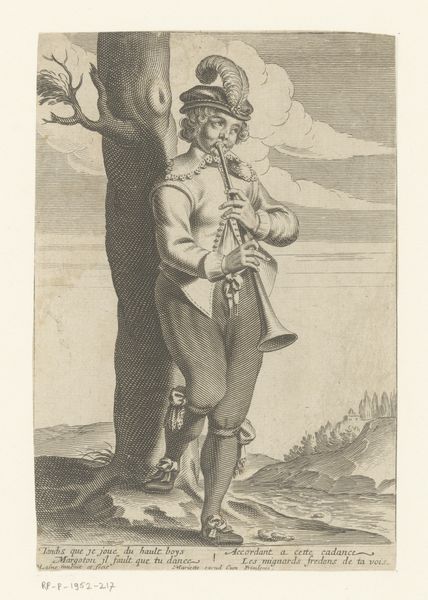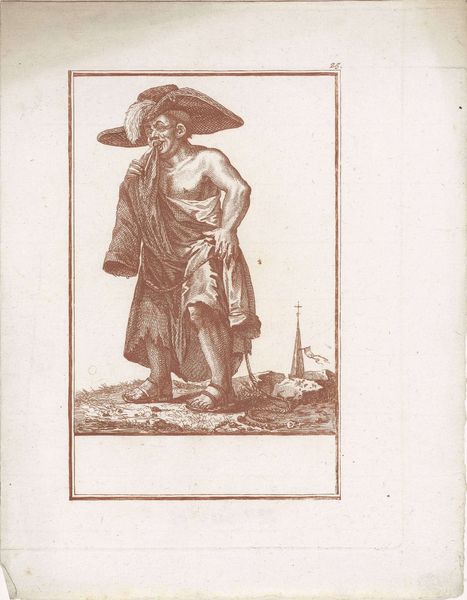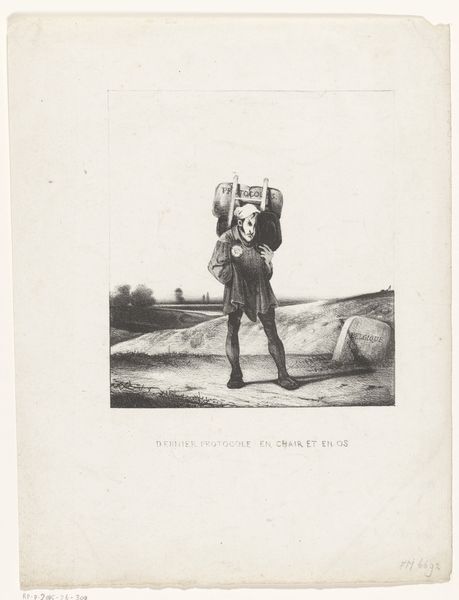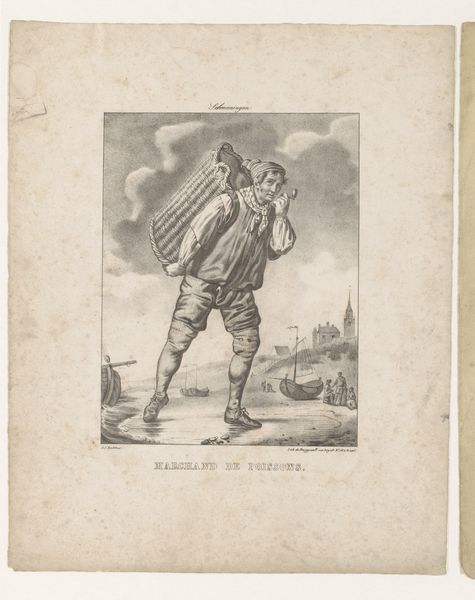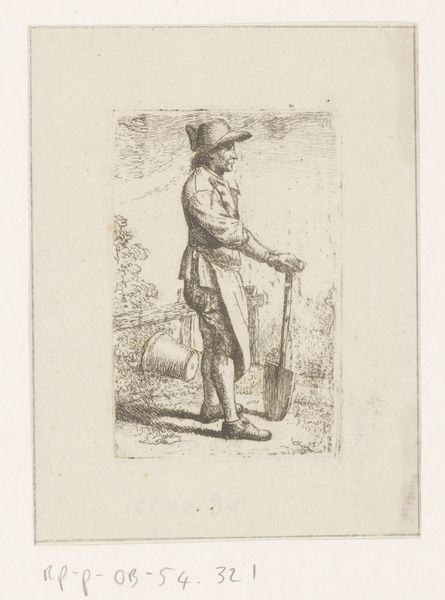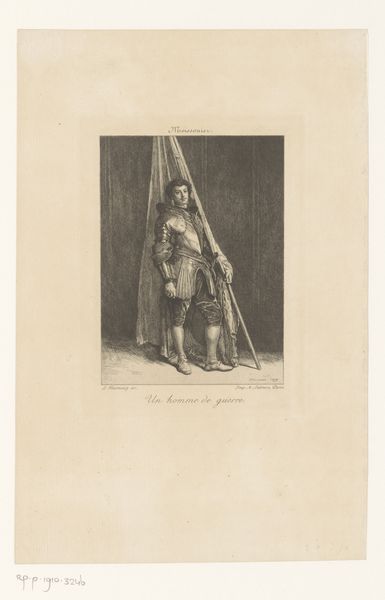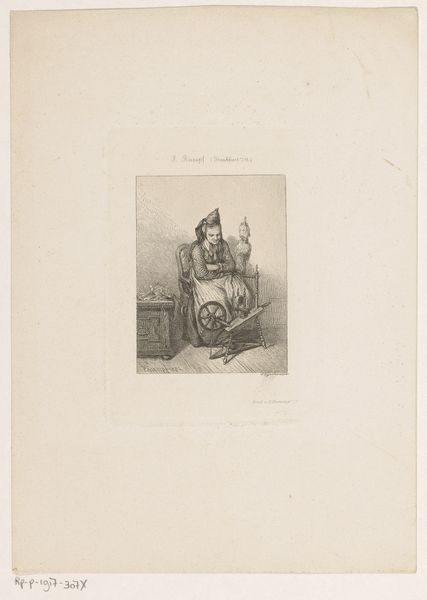
print, engraving
#
portrait
#
baroque
# print
#
figuration
#
line
#
genre-painting
#
engraving
Dimensions: height 122 mm, width 704 mm
Copyright: Rijks Museum: Open Domain
Editor: Here we have Bernard Picart's "Matelot de Brabant," or "Brabantsche schipper," an engraving from the late 17th or early 18th century. It depicts a sailor smoking a pipe on deck. What stands out to me is the sense of quiet dignity, despite his fairly ordinary clothing. What do you see in this piece? Curator: Beyond the immediate depiction of a working sailor, I see a glimpse into the socio-economic dynamics of the Dutch Golden Age. These prints circulated widely, democratizing imagery of various social classes. Consider who had access to such depictions, and how that might shape their perception of those classes. Does the artist subtly ennoble or perhaps otherize him through composition? What message about labor is communicated by juxtaposing a “common” sailor with a finer “art” object? Editor: So, you're suggesting we consider the artwork itself as a kind of social document, not just a portrait? Curator: Precisely. Consider, for example, the rise of tobacco during this period and how that influenced visual culture and, in turn, economics. Or how maritime power shaped not just trade but also Dutch national identity. Can we explore what the sailor smoking represents as status or pleasure during this period? Can this ordinary act become a political message that can tell us how much it costs to be ordinary at that time? Editor: That makes me think about how the print medium allowed for wider distribution. Could that have contributed to some form of class awareness? Curator: Absolutely. It raises interesting questions about the interplay between art, social mobility, and the construction of identity. What does it mean to reproduce and circulate images of common people during a time of vast colonial expansion fueled by maritime labor? Who exactly is entitled to be on a printed support, when it was a support previously granted for the royal members? Editor: Wow, I hadn’t considered all of those angles. Thanks, it definitely gives me a new perspective on how to view these kinds of works. Curator: Indeed! And that critical engagement with art's role in broader historical narratives is crucial. Art doesn't exist in a vacuum. It mirrors, reinforces, and sometimes challenges the societal forces around it.
Comments
No comments
Be the first to comment and join the conversation on the ultimate creative platform.
